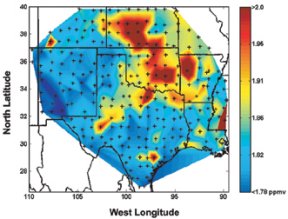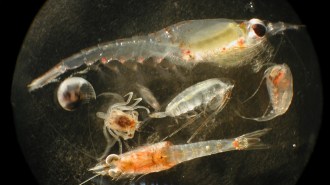Analyses of the atmosphere over the south-central United States show that emissions from the region’s oil and natural gas industries contribute to air pollution–even over remote Kansas cornfields–that can surpass the noxious mix found in urban areas.

In April 2002, researchers collected air samples in a 1,600-kilometer-wide region roughly centered on Oklahoma City. The samples showed high concentrations of methane, ethane, butane, and propane, gases in a class of hydrocarbons called alkanes. Tests also showed prodigious quantities of alkyl nitrates, which typically form when alkanes react with nitrogen oxides in the atmosphere. Such reactions also create ozone, says Donald R. Blake, an atmospheric scientist at the University of California, Irvine.
Peak concentrations of propyl nitrate and butyl nitrate in south-central Kansas were 51 and 68 parts per trillion, respectively. Those measurements are more than twice the amounts tallied in New York City and five times those rung up in Houston during similar studies in 1999, says Blake. Methane, which is a planet-warming greenhouse gas, showed up in some spots at concentrations of more than 3 parts per million, about 50 percent higher than normal. Blake’s team reported its results in the Oct. 14 Proceedings of the National Academy of Sciences.
Pollutant concentrations roughly correlated with locations of the oil and natural gas refineries in the region. The smog chemicals showed up in Kansas primarily because the state was downwind of these alkane sources at the time of the measurements, says Blake.
****************
If you have a comment on this article that you would like considered for publication in Science News, send it to editors@sciencenews.org. Please include your name and location.







